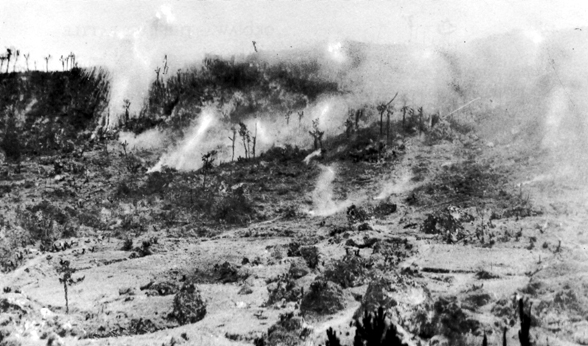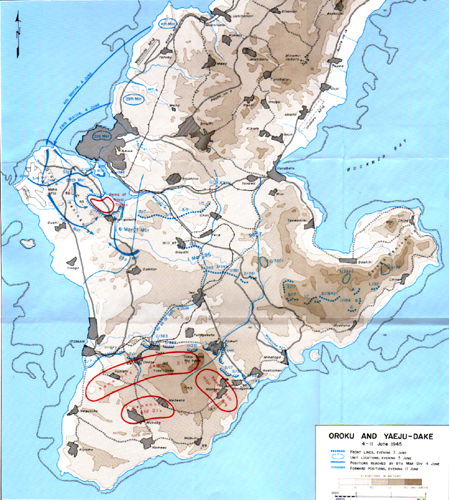On Okinawa, many of the Japanese naval infantry cut off in the Oruku peninsula, reduced to a pocket of about 1000 square yards, begin to commit mass suicide to avoid surrender.
The US 1st Marine Division captures the west end of Kunishi Ridge during a night attack.
The US 96th Division attacks Japanese positions around Mount Yuza and Mount Yaeju.
On Okinawa, the Japanese resistance in the Oruku peninsula ends. The US 6th Marine Division records a record 169 Japanese prisoners as well as finding about 200 dead. (This is a large total when compared with previous numbers of Japanese prisoners reported.)
The fighting continues to the southeast, especially in the Kunishi Ridge area where a regiment of the US 1st Marine Division suffers heavy casualties.
The US 24th Corps uses armored flamethrowers in the elimination of the Japanese held fortified caves on Mount Yuza and Mount Yaeju and on Hills 153 and 115.
Battle line on the Kiyan Peninsula, 10-19 June 1945
On Okinawa, mopping up operations proceed on the Oroku peninsula.
The troops of the US 3rd Amphibious Corps and the US 24th Corps continue to eliminate fortified caves held by Japanese forces on Kunishi Ridge and on Mount Yuza and Mount Yaegu.
An American regiment of the US 96th Division reaches the summit of Mount Yaegu, while the US 7th Division extends its control of Hills 153 and 115.
Okinawa Campaign Background — Goodbye General Mud




